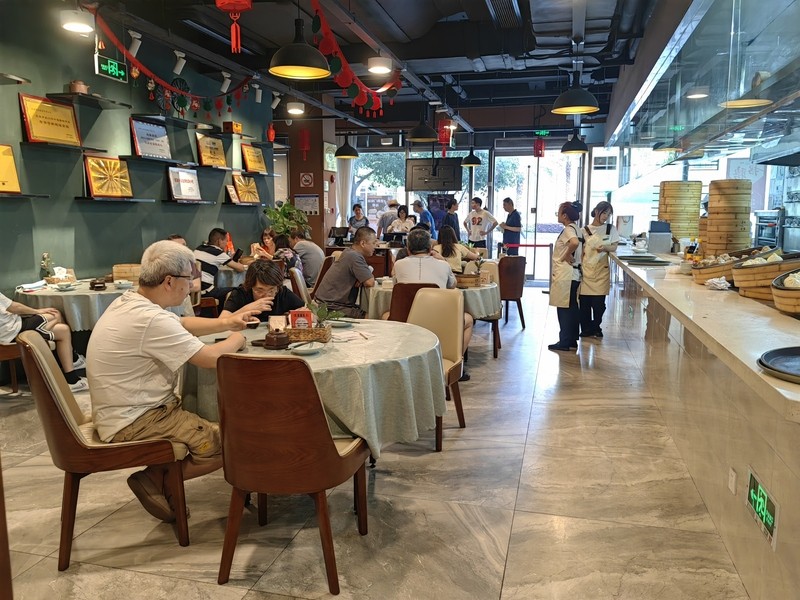Zongzi, steamed rice with lotus leaves, original green leaf feast... green leaves also have these wonderful uses in diet lotus leaves | wrapping | green leaves
With the Dragon Boat Festival approaching, Zongzi is an indispensable holiday food on the table. It is precisely because of the unique flavor of the leaves that the Zongzi is delicious. Green leaves have a place in Chinese food culture. Do you know what green leaves can make Zongzi? What other leaves wrap around everything besides zongzi leaves to add flavor to food? What green leaves have become dishes on the dining table, opening up an environmentally friendly and quaint way of eating?
Various factions of zongzi leaves
China has a vast territory. People like different Zongzi from south to north with sweet and salty taste. Even the leaves used to wrap Zongzi are different across the country.
The types of zongzi leaves are diverse. Generally speaking, reed leaves are commonly used in the north, bamboo leaves are commonly used in the Jiangnan region, new leaves or banana leaves are preferred in the tropical coastal areas of the south, and mistletoe leaves are also used in Shandong, Henan and other places. This is certainly inseparable from factors such as local climate and resources.
The common reed leaves in the north grow on both sides of mudflat wetlands. The shape of this kind of leaves is thin and long, and the width is about 5cm. So before making Zongzi, you should fold the leaves of Zongzi first, and stack two or three leaves together to increase the width. Reed leaves smell like natural grass. They contain a lot of chlorophyll and amino acids that are beneficial to human health. Many natural essence and food additives are also extracted from them. Reed leaves are not only used to wrap Zongzi, but also to make bamboo hats and other handicrafts.
Ruo bamboo leaves commonly used in Jiangnan are very suitable for making Zongzi, and what we usually say is Ruo bamboo leaves. Its leaf width is twice that of reed leaves, 10 centimeters wide, and the bamboo leaves are both soft and resilient, making them less prone to cracking. Ruo bamboo leaves are most famous for the "Huiding" Ruo leaves produced in Xiuning, Anhui Province. Shanghainese believe that the "Huizhou Ruo" plucked from Mount Huangshan during the summer solstice is of the best quality. When making Zongzi, people usually put the leaves into water to boil for a while, and adjust the flavor of the leaves by controlling the duration of the boiling.
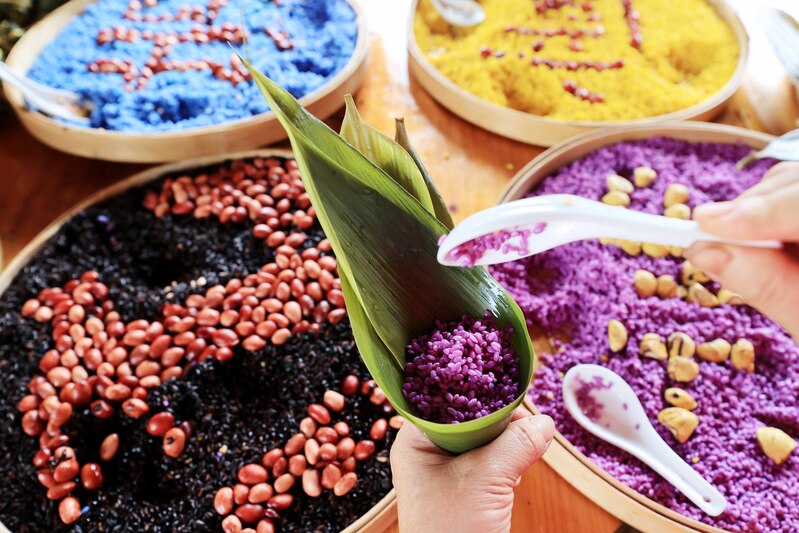
Banana leaf wrapped zongzi is commonly found in the southern and southwestern regions of China. Banana is a subtropical plant, and the five colored zongzi of the Miao, Zhuang, and Buyi ethnic groups commonly use banana leaves. Bananas are native to the tropics, and the famous Machong zongzi in Dongguan, Guangdong and the Boluo zongzi in Guangzhou use local banana leaves. Unlike the triangular and conical Zongzi wrapped with indocalamus leaves, the banana leaves are suitable for square zongzi.
New leaves with heat clearing effects are also popular among people in southern regions. The flexibility of the new leaf is not as good as that of reed leaf and indocalamus leaf, but better than that of plantain leaf. The Zongzi wrapped with it is generally large enough, with a faint yellow, very delicious.
Different from other Zongzi made of whole leaves, the forest side zongzi in Dongguan, Guangdong, is an alternative existence. The leaves of Zongzi beside the forest come from the pandanus trees in Zhanjiang, Maoming and other places. It is different from the appearance of ordinary zongzi. It is more like a woven handicraft, like a basket. Linbian zongzi is a municipal intangible cultural heritage in Dongguan, representing a sense of hometown and culture. It comes in eight forms: a vegetable basket, a fish basket, a shrimp bowl, a pillow, divine boots, sandals, a pen holder, and a dog head, representing beautiful meanings such as academic progress, worry free life, and successful career.
Lotus Leaves Achieve Lingnan Cuisine
The lotus, known as "hibiscus" in ancient times, is an elegant plant, and its leaves are also treasures of nature, which can be used as medicine or in food. Lotus leaves can clear heat and dispel dampness, and the alkaloids and flavonoids contained in them have antioxidant effects. Compared with Zongye, there are more delicious foods wrapped in lotus leaves, such as glutinous rice chicken with lotus leaves, Steamed Pork with Rice Flour in Lotus Leaf with lotus leaves, Congee with lotus leaves, etc.
The scene described in the poem "Bamboo Branch Poem in Yangcheng" from the end of the Qing Dynasty describes the delicacy of Lingnan region - lotus leaf rice.
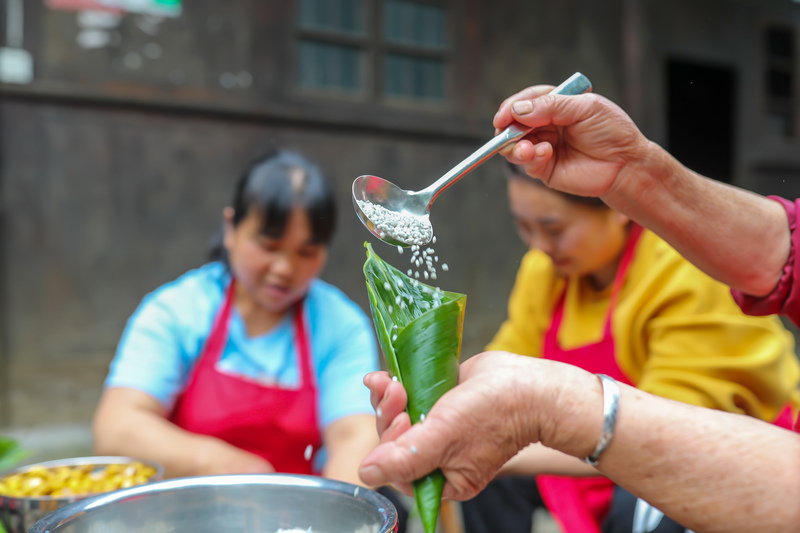
Lotus leaf rice first appeared over 1400 years ago, related to a period of history during the Southern and Northern Dynasties. After Chen Baxian declared himself emperor, due to his resistance against the Northern Qi dynasty, he saw that the grain was running out. The local people picked lotus leaves and wrapped them in food to deliver to the city. This kind of love for delivering charcoal in the snow gave the appearance of lotus leaf rice a legendary color. But it can be seen from it that using lotus leaves and other green leaves to wrap food is the wisdom of the common people.
Lotus leaves are emerald green, both broad and round. Using them to wrap food can not only preserve freshness but also add flavor. It is said that glutinous rice chicken originated from the night market in Guangzhou, initially placed in porcelain bowls. Later, in order to facilitate the flow of stalls, vendors used lighter lotus leaves to wrap it, adding more flavor. In addition to chicken, people gradually add mushrooms, sausage, salted egg yolk and other ingredients, and even use them to wrap pork chops, Dongpo Braised Pork, pigeons, beef ribs, etc., so that the fragrance of lotus leaves and the greasy meat dishes become more diversified. Later, lotus leaf glutinous rice and chicken gradually spread to tea houses, restaurants, and other places in Guangdong, becoming a long-standing Cantonese cuisine.
In midsummer, people still use lotus leaves to cook Congee, which can be used to clear away heat and relieve summer heat. It also has certain curative effect on high blood fat and hypertension of middle-aged and elderly people.
Vanilla has its own flavor when mixed with vegetables
There has been a legend in China since ancient times that Shen Nong tasted a hundred herbs. In modern society, green leaves, which serve as edible herbs, still exude the fragrance of the dining table. "Using leaves to cook" has been attempted in China and around the world.
Speaking of the king of Southeast Asian spices, the presence of colorful leaves is indispensable. Many people travel to Southeast Asia and bring back pastries with colorful leaves as souvenirs. These slightly sweet leaves often appear in pastries such as sago and pudding. Thai style leaf wrapped chicken is made by frying marinated chicken in colorful leaf knots, with a unique flavor. Colorful leaves are a type of herbaceous plant originating from Southeast Asia and widely cultivated here, also known as vanilla, blue blood tree, etc. Nowadays, many colorful leaves are also planted in the Hainan region of China.
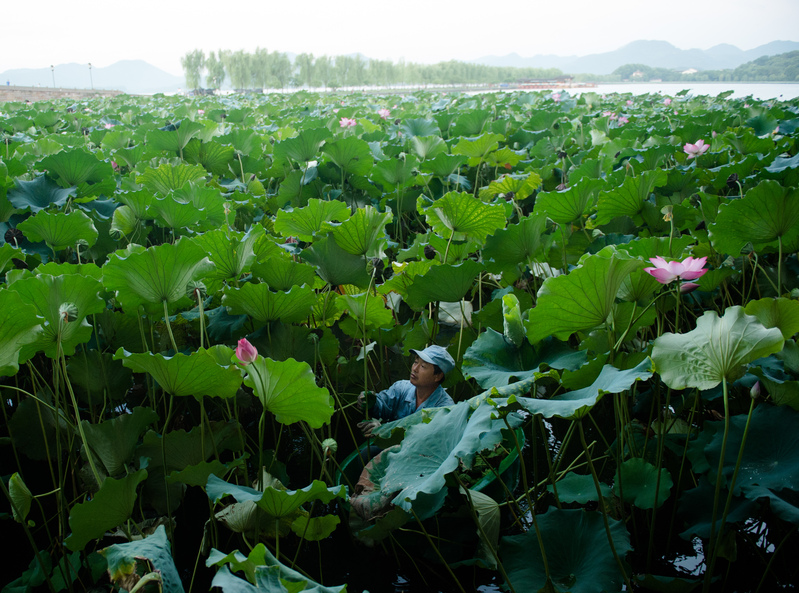
Ye'erba is a traditional snack in Sichuan, with leaves used to wrap fillings called Da Ye Xian Mao. It is originally from southern China and is now distributed in southern, central, southwestern, southeastern and other regions, including Vietnam and India. The unique shape of the large leaved fairy grass, with different colors on the surface and back of the leaves, is evergreen all year round, and is also a beautiful potted foliage plant, suitable for indoor decoration or public space decoration.
In Russia, pickled cucumbers are often topped with a few astringent oak leaves to preserve the crisp taste of summer cucumbers. Western countries regard oak trees as a symbol of perseverance. Oaks contain high levels of tannic acid and can thrive even under attacks from fungi, insects, and other substances. Therefore, their leaves are like natural preservatives, suitable for pickling dishes.
The purple perilla with leaves resembling water droplets, originally found in Japan, South Korea, and other places, is now widely cultivated in the United States and Canada. Japanese perilla is small and soft, with two types: green and purple. Green perilla is usually eaten raw as vanilla or as a dish decoration. Korean perilla leaves are larger and have a spicy flavor similar to cinnamon and star anise. Korean perilla leaves, which have been pickled and fermented, are a popular Korean side dish.
Green leaf dishes are environmentally friendly and rustic
The role of small leaves on the dining table is not only food, but also the "environmental ambassador" of the catering industry.
In India, people are very good at using natural resources, which are simple, convenient, and environmentally friendly. For example, palm leaf dishes made in India have a wood grain texture, but they are actually made from the leaves of a sunflower. The leaves themselves are 100% compostable and biodegradable. Nowadays, restaurants in the United States, Canada, and other places have introduced palm leaf plates, which are disposable tableware made from plants and can be said to be the most environmentally friendly alternative to tableware.
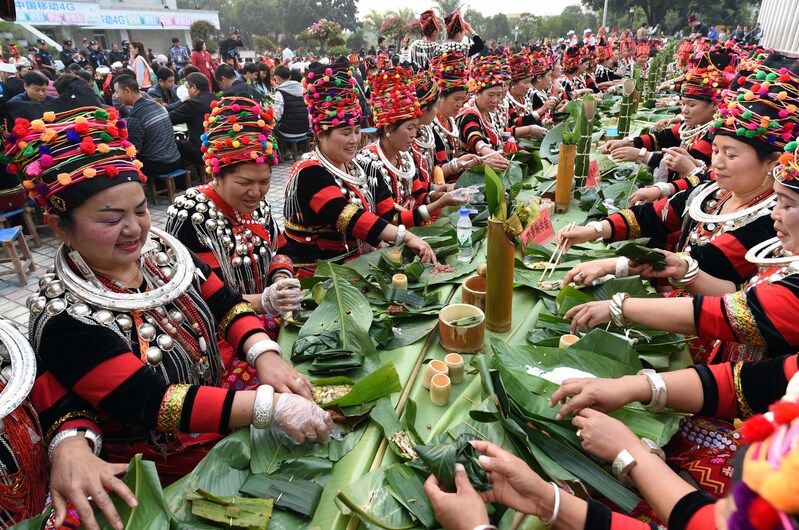
The use of green leaf containers by the Jingpo ethnic group in Yunnan, China is more primitive and full of fireworks.
Yunnan Jingpo Green Leaf Banquet
The famous Green Leaf Banquet of the Jingpo ethnic group is full of greenery. The tablecloths made of different fabrics on the dining table have turned into large plant green leaves, which are finely spliced and laid flat on the dining table. All the food is served in bowls and plates made of stacked banana leaves and other ingredients. Even spoons and wine glasses are made of leaves and bamboo. The food at the banquet is all green and pollution-free food grown in nature, giving people a sense of returning to nature. When eating, do not use common utensils such as bowls and chopsticks. Wash your hands thoroughly and open the package.
The Green Leaf Banquet was born in an ancient mountain village of the Jingpo ethnic group, full of wisdom amidst its simplicity, and thrives among the people. This unique dietary custom is recorded in the historical records of the Yuan and Ming dynasties, such as "eating without utensils, recorded with banana leaves", "eating without chopsticks", "eating in balls", and so on. This custom gives people a primitive feeling, but nowadays there is a lot of environmental pollution caused by packaging and other factors. Green leaf banquets can be considered as an exploration and inspiration, and perhaps more and better "green containers" can be developed in the future.


